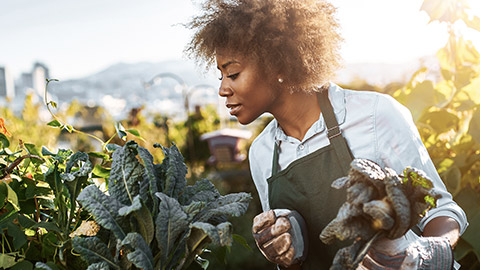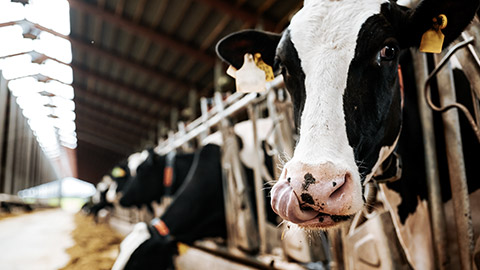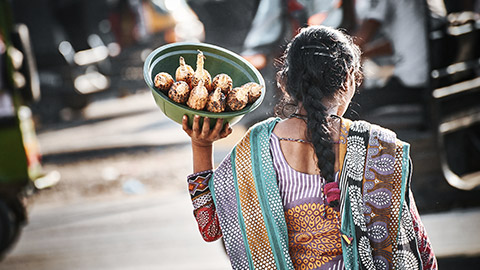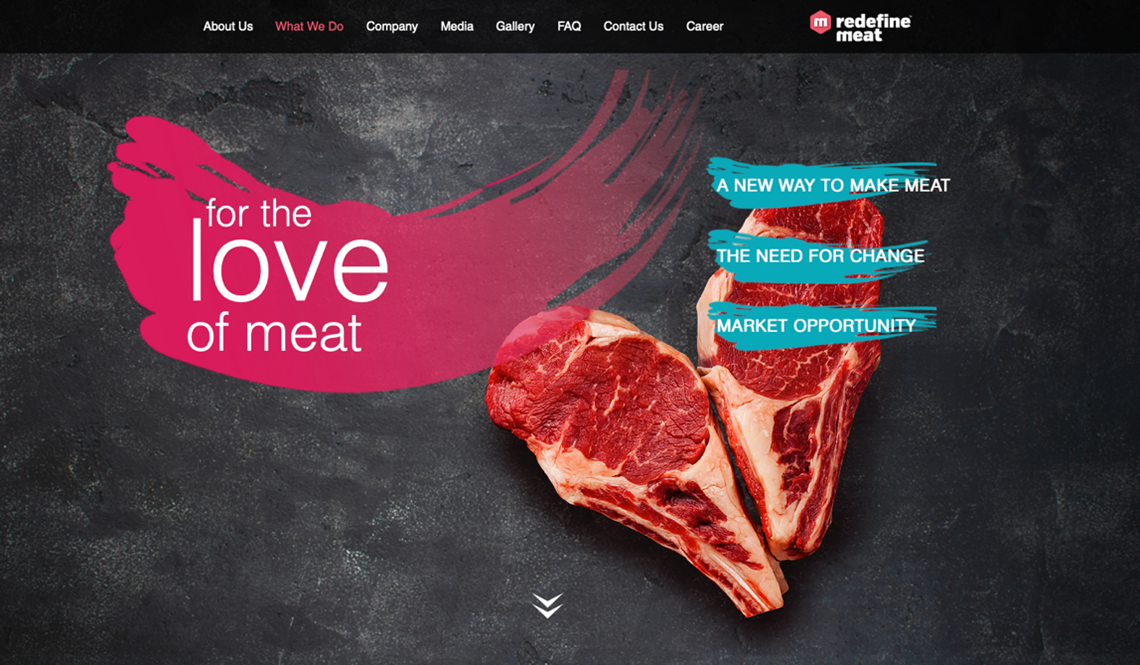‘Around the world’ sections will occur regularly across this module. They will be extremely useful for you in researching and preparing for your assessment. Each one will have a slightly different focus, and will include guidance for you to help focus your research. Allow up to 2 hours for each one (this includes your SDL for the day).
THAILAND

- Identify any distinct food areas within Thailand Which foods are associated with regional and national Thai identity?
- What are the most common kinds of dishes in Thai cuisine?
- Are there any foods or dishes that non- Thai people would find strange or exotic?
- What is the influence of geography and climate on food in Thai culture?
- If possible, try making a Thai dish, that has been influenced by geography and climate, at home
(Sustainable, n.d.)
We look at the importance and application of sustainable food strategies again in later courses of your studies, it is a very important topic for running a profitable food business, for helping improve the natural environment but also to explain what people eat in different regions. In this case, sustainability is linked to the climate and geography of a particular location.
Watch
What is food sustainability?
From the definitions in the Cambridge Dictionary we can see that when thinking about food, sustainability is to do with the ability to keep producing enough quantitiy and quality of food for as long as needed, with as little negative impact on the environment as possible – and this is becoming more and more important as the world’s population increases and the climate changes.

What is involved in food sustainability?
Sustainability is the overall package of growing, distributing, packaging and consumption of food – it is the journey from farmer to the dinner table (“pasture to plate” or “farm to fork” are modern terms to describe the holistic nature of food production – it may help consumers to be more aware of what is needed to produce their food)
How does sustainability of food affect what and how people eat?
Food production is a business driven by profit at every stage, from the grower all the way to the retailer. As businesses are driven by consumer demand, changing their taste and raising environmental awareness may change what kind of food is produced at the farm, and the production methods used. Governments around the world are increasingly imposing tougher and tougher environmental protection laws affecting how food is produced and transported – all of which impact on what consumers eat and how much they pay for their food.
Food growing inputs:
These are what is needed to be able to grow and transport food to our tables.
Exercise 22
- What inputs are needed to grow crops and raise animals for consumption?
- What is needed to transport these commodities to our tables?
Which foods are the worst for environmental sustainability?
Many studies show meat and dairy products to be some of the worst foods for the environment:

-
Livestock farming occupies 83% of farmland but
-
generates only 18% of calories consumed
-
provides only 37% of protein requirements
-
produces 60% of agricultural greenhouse gas emissions
-
-
Even the best practice dairy and meat farming is worse than the worst vegetable and cereal production
-
Case study: beef produces 105kg greenhouse gases per 100g of protein, compared with tofu which creates under 3.5kg/100g
Exercise 23
Explore some examples of how the awareness of the impact of unsustainable food production practices has led to a change in the way people eat.Self-Directed Learning
Work on assessment 5.1
‘Around the world’ sections will occur regularly across this module. They will be extremely useful for you in researching and preparing for your assessment.
Each one will have a slightly different focus, and will include guidance for you to help focus your research. Allow up to 2 hours for each one (this includes your SDL for the day).
India

Identify any distinct food areas within India Which foods are associated with regional and national Indian identity? What are the most common kinds of dishes in Indian cuisine? Are there any foods or dishes that non-Indian people would find strange or exotic? What is the influence of sustainability on food in Indian culture? If possible, try making an Indian dish at home
The history of food production is an integral part of the history of the human race. Food being one of the essential requirements for our existence, the ability to find and prepare enough food to eat is a problem which has always confronted humanity. The development of modern civilisations with ever-improving technologies has changed greatly how and what we eat over the past thousands of years.
It is estimated that our species has been around for almost 200,000 years, and for the vast majority of that time we have depended on gathering food from the wild. Many of the crops we eat today have developed from wild plants which have existed for thousands of years. Our ancestors also ate meat, hunting wild animals, but there is also evidence of them eating insects and the remains of dead animals too, Gradually, early humans started to cultivate their own crops and raise livestock for food. There is evidence of this occurring from around 11,000 BCE in several parts of the world, including China, Central America and the Middle East. (Driver, 2016)
Watch
Exercise 24
In groups, explore and discuss why you think these ancient human civilisations started to develop farming as a way to provide food for themselves. What were the advantages and disadvantages of moving to this system of food production?
Modern Developments in Food Production Technology
Since the development of agriculture, there have been many developments in the way food is produced – how it is grown, harvested, processed, transported and sold to the end consumer. These developments have had an impact on the food we eat – think about the difference of a modern diet compared to that of our ancestors. Let’s look at one example before you research other ways what we eat today has been affected by food production technology.
Example:
Earlier we discussed sustainability of food production as a big problem facing the planet and human population – affecting what and how we get our raw ingredients for our cuisines. One point we saw was how inefficient raising beef cattle is, in terms of the impact on the environment – space needed to graze and grow feed, water needed, artificial fertilisers to help grow supplementary feed etc. There are various answers to this problem, including social (changing eating habits to become more plant-based), but also high tech.
Content

Redefine Meat is one of several companies which is producing foodstuffs created in a laboratory rather than in a field. Other companies have commercialised plant-based products which mimic very closely the flavours and textures of minced beef for burgers (Impossible Burger, Beyond Meat), but the race is now on to produce an animal-free steak – a whole muscle cut which is designed to look, cook, feel and taste the same as traditionally-reared steak.
What is Redefine Meat?
It is a meat alternative, designed to have “the same appearance, texture and flavour of animal meat, from natural and sustainable ingredients” (Redefinemeat.com, n.d.). It uses the technique of 3D food printing to create the product.
3D printing is a technique to process edible ingredients into other forms, combining and layering them into different shapes and textures. Layers are built up from raw plant-based material or from animal cells (which can be isolated without any harm to any actual animal) to produce a steak (or any other type of meat). (Rubin, 2019)

- Environmental – as we saw, raising animals for meat (especially beef and lambs) is extremely costly in terms of land use, water, feed required etc. 3D printed meat would hugely reduce greenhouse gas emissions associated with this practice - livestock production is responsible for 18% of total global warming contributions (second only to energy production) (Scientific American, n.d.)
- Health – meat can be lab-grown with no cholesterol and no food-borne pathogens.
- Ethics – some vegetarians who object to eating meat on animal welfare grounds may be able to enjoy eating meat without the moral dilemmas.
- Distribution – Eventually, when the production costs become much lower, lab-grown meat could feed millions of people in poorer nations who are unable to afford meat at the moment.
- Cost – currently in its infancy, this industry has very high costs associated with research and development of the product. Redefine Meat sirloin was expected to retail at around £28/kg (around $53NZD/kg) in the UK, which is roughly double the price of traditional beef. However, this cost is expected to reduce dramatically over time and eventually should be cheaper than traditionally-raised beef.
- Consumer resistance – when it comes to what we put on our plates, consumers are naturally cautious of new technologies. There may be resistance to such radical new products, until tested and widespread. It is possibly a product the younger generations will embrace before older generations.
Exercise 25
What do you think of 3D printed foods? Would you eat these products? Have an online debate with one other classmate on the ethics of traditionally-reared meat vs. lab-grown meat. You should each take a particular position.
Spend 30 minutes online researching other examples of how food production technology has changed the way we eat today. You could consider changes to the way food is grown, harvested, transported or retailed – any way which changes in food production have affected our eating habits. List key facts – what was the technology? How did it change food habits? What are the positives and negatives of this?
